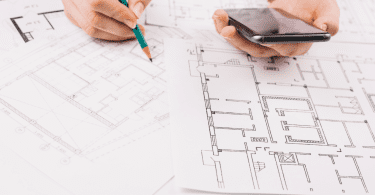Why may the right formula either make or break your next purchase?
Investing in real estate is more about ensuring the numbers work in your favor than it is about choosing a great house. Whether your company wholesales, flips, or buys rental properties, using the right equations can make all the difference between making a profit or losing hundreds of thousands of dollars.
Too often, new investors depend more on gut intuition or approximations than on exact computation. Seasoned professionals, however, know that data-driven decision-making distinguishes a good deal from a bad one.
This post will go over why the right formulas are important, which ones you should use, and how tools like a “Real Estate Wholesale Calculator” might simplify your transaction analysis and boost your results.
The Value of Exact Figures in Real Estate Investing
Real estate requires computation just as much as it needs location. If the data don’t line up even in a hot market, a deal that sounds great on the surface could be a financial nightmare.
❌ Overestimating the After Repair Value (ARV)
❌ Underestimating renovation costs
❌ Forgetting about holding and closing costs
❌ Failing to compute an accurate Maximum Allowable Offer (MAO)
❌ Not considering the impact of market conditions
Using the right algorithms ensures that before you commit your money, every offer is evaluated precisely.
Important Formulas Every Investor Should Know
Let’s start with some of the most crucial formulas every real estate investor should learn to be competent with.
1. Maximum Allowable Offer (MAO) Formula
The Maximum Allowable Offer (MAO) helps buyers choose the ideal price for a house so that they still profit.
MAO = (ARV x 70%) – Repair Costs – Wholesale Fee
The predicted market value of the property following repairs is known as ARV or after repair value.
The 70% Rule is a common investing guideline that helps one pay for bills and yet turn a profit.
- Repair costs: The expected running cost of the property.
- Wholesale fee: If you are wholesaling, this is your expected assignment profit.
For example, if a property has an ARV of $250,000 and needs $40,000 in repairs:
MAO = (250,000 x 70%) – 40,000
MAO = 175,000 – 40,000
MAO = 135,000
This means that your best offer on the property should be $135,000 to ensure a profitable sale.
2. After Repair Value (ARV) Formula
The After Repair Value (ARV) determines the future value of a property following repairs.
ARV = Average Comparable Homes Sale Price
ARV Calculation Steps:
- Look for three to five comparable homes (comps) sold in the last three to six months.
- Adjust for square footage, lot size, and renovations.
- Average the sale prices of those comps to find the ARV.
Why It Matters:
- Overstating ARV can lead to overpaying and losing money.
- Undervaluing ARV might make you miss out on great deals.
3. Estimating Correct Repair Costs
Undervaluing repair costs is one of the most common mistakes new investors make.
A simple approach to estimate costs is a cost-per-square-foot analysis:
- Light repairs (paint, flooring, small fixes): $20–$30 per square foot
- Medium repairs (kitchen, bathroom, HVAC): $40–$60 per square foot
- Major repairs (foundation, roof, structural work): $70–$100+ per square foot
For example, if you are purchasing a 1,500-square-foot house needing a full renovation at $50 per square foot:
Repair Costs = 1,500 x 50 = 75,000
Correct repair estimates ensure you avoid underestimating costs and draining your profits.
Simplifying Your Research Using a Real Estate Wholesale Calculator
Many investors quickly review offers using a Real Estate Wholesale Calculator instead of manually computing figures.
A good calculator can:
✔ Quickly compute MAO
✔ Factor in repair, holding, and closing costs
✔ Adjust for different profit margins
✔ Provide quick “go/no-go” deal options
A Real Estate Wholesale Calculator will guide your investment selections, help you reduce mistakes, and save time.
Considering Holding and Closing Costs
Ignoring these costs could cause your profit to disappear even with a great deal.
Holding Costs Include:
- Mortgage payments (if financed)
- Property taxes and insurance
- Utility fees
- HOA fees (if applicable)
Closing Costs Include:
- Title and escrow fees
- Realtor commissions (if reselling)
- Loan origination fees (if financing)
A general rule is to budget 1–2% of ARV per month for holding costs and 10% of ARV for closing costs.
For example, if ARV is $250,000:
- Closing costs = $250,000 x 10% = $25,000
- Holding costs (4 months at 2%) = $250,000 x 2% x 4 = $20,000
- Total additional costs = $45,000
Ignoring these costs will quickly reduce your profitability!
The Bottom Line: The Right Formula Ensures the Right Returns
Real estate investment is about running the numbers right, not just picking properties. Correct formulas and tools like a Real Estate Wholesale Calculator ensure that you:
✔ Purchase at the right price
✔ Factor in all expenses
✔ Avoid lowballing or overpaying
✔ Optimize your profit margins
Always double-check the numbers before committing to your next investment. The right formula can separate a financial crisis from a massive payday.





